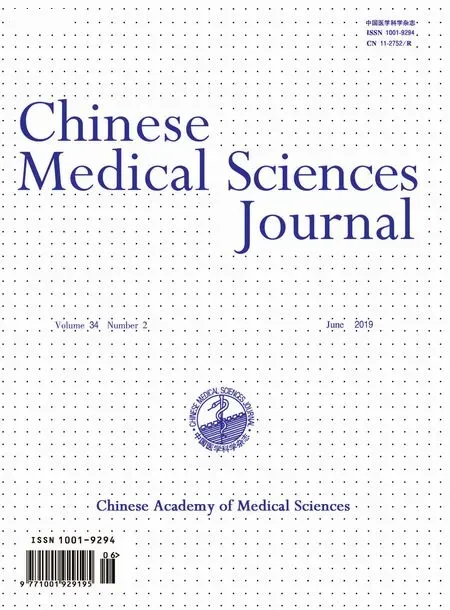The Next Era: Flourish of National Health Care & Medicine with the World Leading Artificial Intelligence
Jian Wu*
College of Computer Science and Technology, Zhejiang University, Hangzhou 310027, China
M ODERN medical diagnosis and practice heavily rely on biological data and information from patients’ body. The progress of biomedical sensor, material and mathematical technology provided ever-increasing methods to gather data. While providing more choices and more comprehensive picture of patients’ conditions to doctors and practitioners, these progresses also require more labor efforts to read, analyze, and make decisions based on those data. It is very difficult for the medical human resources to grow at a speed that matches such need for diagnosis-related expert knowledge. The shortage of expertise has caused long waiting time for check report and fatal misjudged diagnosis in public health system, and it will compromise our ability to move towards a more precise, more personalized and more efficient future of medicine.
The most helpful solution at present time is the introduction of artificial intelligence (AI) into medicine. AI has experienced rapid development in recent years due to availability of big data and deep learning.1It has revolutionized computer vision, natural language processing, and goal-directed task solving.2There have been a lot of AI applications in medical practices and health care,3,4including image proof reading,5medical records structuring,6risk prediction and management,7etc. AI not only can provide consistent and stable diagnosis/analysis ability that can be easily extended, but is also useful in training of medical skills, thus help solving the shortage issue from human resource side too.
This special issue focuses on recent advances of medical AIs. It includes review articles for the key AI algorithms and technologies used in medicine, the current status of computer-aided diagnosis in several fields or diseases which are heavily studied, the examples of applications of AI in various forms, and the potential way that AI can cooperate and change the common practice of health system. We hope this issue can give experts and practitioners in medicine a comprehensive view of the status quo of medical AI and inspire more ideas for further development of this realm.
REFERENCE
1. LeCun Y, Bengio Y, Hinton G. Deep learning. Nature 2015; 28;521(7553):436-44. doi: 10.1038/nature14539.
2. Mnih V, Kavukcuoglu K, Silver D, et al. Playing atari with deep reinforcement learning. https://arxiv.org/abs/1312.5602. Published December 19, 2013; accessed June 9, 2019.
3. Esteva A, Robicquet A, Ramsundar B, et al. A guide to deep learning in healthcare. Nature Med 2019;25(1):24-9. doi: 10.1038/s41591-018-0316-z.
4. He J, Baxter SL, Xu J, et al. The practical implementation of artificial intelligence technologies in medicine.Nature Med 2019; 25(1):30-6. doi: 10.1038/s41591-018-0307-0.
5. Greenspan H, Ginneken BV, Summers RM. Deep learning in medical imaging: overview and future promise of an exciting new technique. IEEE Trans Med Imaging 2016; 35(5):1153-9. doi: 10.1109/TMI-2016.2553401.
6. Ravi D, Wong C, Deligianni F, et al. Deep learning for health informatics. IEEE J Biomed Health Informatics 2016; 21(1):4-21. doi: 10.1109/JBHI.2016.2636665.
7. Ravizza S, Huschto T, Adamov A, et al. Predicting the early risk of chronic kidney disease in patients with diabetes using real-world data. Nature Med 2019;25(1):57-9. doi: 10.1038/s41591-018-0239-8.
 Chinese Medical Sciences Journal2019年2期
Chinese Medical Sciences Journal2019年2期
- Chinese Medical Sciences Journal的其它文章
- Integrative Analysis Confirmed the Association between Osteoprotegerin and Osteoporosis
- A Survey of Surgical Patient’s Perception about Anesthesiologist in a Large Scale Comprehensive Hospital in China
- Medical Knowledge Extraction and Analysis from Electronic Medical Records Using Deep Learning
- A Survey on Intelligent Screening for Diabetic Retinopathy
- Multi-Atlas Based Methods in Brain MR Image Segmentation
- Application of Mixed Reality Technology in Visualization of Medical Operations
